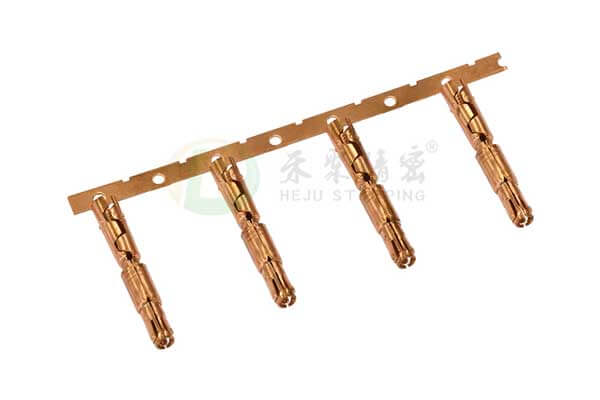How do High-voltage Connectors for New Energy Vehicles Protect Safety and Energy Efficiency?
Currents of up to 400V or even 800V flow through the high-voltage power system—the “blood vessels” of new energy vehicles. High-voltage connectors are crucial for ensuring the safe, stable, and efficient transmission of this powerful power. Far more than a simple plug, they integrate sophisticated components with electrical engineering, materials science, mechanical design, and safety logic, serving as silent guardians of vehicle safety and performance.
Beyond “Connection Terminals”: The Core Mission of High-Voltage Connectors
High-voltage connectors for new energy vehicles (EVs) primarily connect core high-voltage components such as the battery, motor controller, drive motor, and DC charger. Their core mission can be summarized in three key areas:
- Safety Guardian
They must absolutely prevent high-voltage arc breakdown, current leakage, and potential thermal runaway risks. This requires superior insulation performance and EMC shielding to resist electromagnetic interference and ensure stable operation of the electronic control system.
- Energy Artery
EVs must carry hundreds of amperes of high current. Any additional resistance results in energy loss and heat generation, directly impacting range.
- Environmentally challenged
These must handle the constant vibration, extreme temperature fluctuations, rain, and dust that accompany vehicle operation. A waterproof automotive connector (typically rated IP67 or higher) is essential for long-term reliability.
What Makes an Excellent High-voltage Connector?

Excellent Contact System
Connector terminals: As the core of current transmission, their material (such as high-conductivity copper alloy), plating process (such as silver plating), and spring design are crucial, determining contact resistance, insertion and removal force, and durability.
Comprehensive Sealing Protection
A waterproof automotive connector typically features multiple levels of sealing (cable-connector interface, terminal-housing interface, and connector mating interface) to achieve high protection ratings such as IP6K9K (water jet and dust resistant), ensuring internal components remain dry and clean in harsh environments.
Rugged Mechanical Structure and Locking System
A secondary locking structure secures the terminal in place, while the primary connector lock prevents the plug and receptacle from loosening even under strong vibration, preventing power interruption.
Electromagnetic Shielding Design
High-voltage systems generate strong electromagnetic fields. An effective EMC shielding connector, using a metal shell or braid to isolate electromagnetic interference, protects sensitive electronic equipment within the vehicle and is essential for meeting global electromagnetic compatibility regulations.
Ubiquitous Power Nodes
Internal and external connections in the battery pack: These are the core of the EV battery connector system.
Motor and Electronic Control Unit: These transmit the three-phase AC power required for driving the vehicle.
DC Fast Charger: These carry the high voltage and current required for high-power charging.
Onboard Charger & PTC Heater: These connect to other high-power onboard electrical devices.
How to Choose a Qualified Partner?
Faced with stringent technical requirements, choosing a professional EV connector manufacturer, rather than a simple parts supplier, is crucial to project success. A qualified automotive terminal supplier should possess:
- System-level Design Capabilities
Participate in the customer’s early design phase and provide connector selection, routing, and thermal management advice.
- Comprehensive Testing and Certification
We have comprehensive laboratories to conduct product testing for electrical performance, mechanical life, environmental compatibility, and EMC to ensure compliance with global automotive standards.
- Mass Production Consistency and Quality Control
Establish stringent processes to ensure the superior quality of every electric vehicle terminal produced in millions of units.
- Customization capabilities
Provide custom high-voltage terminal solutions tailored to your specific needs.
Conclusion
As new energy vehicles pursue longer driving range, faster charging, and greater safety, high-voltage connectors, though small, are an indispensable cornerstone. Their performance directly defines the performance ceiling and safety baseline of the entire vehicle.
Are you looking for a reliable and efficient high-voltage connector solution for your next-generation electric vehicle platform? Contact us today and let us safeguard your powertrain with our expert connection technology.
